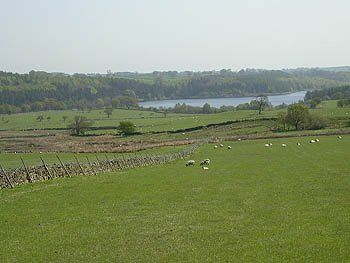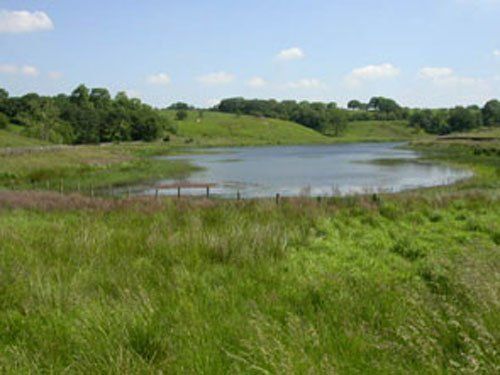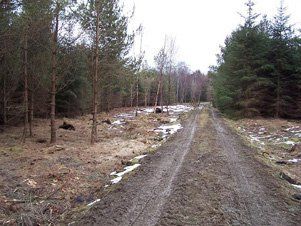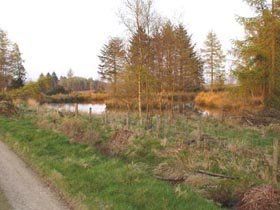- Home
- General Information
- Sightings
- Birding Locations
- Publications
-
Archive 1987 - 2018
- A Checklist of Bradford's Birds
- Swans & Geese
- Ducks & Sawbills
- Divers, Grebes, Herons
- Eagles, Kites & Harriers
- Buzzards & Hawks
- Falcons
- Grouse, Quail, Crakes
- Waders - Part1
- Waders - Part 2
- Skuas and Gulls
- Terns & Auks
- Doves, Nightjar & Alpine Swift
- Hoopoe, Wryneck, Larks, Pipits
- Owls, Woodpeckers
- Thrushes
- Warblers and Tits
- Shrikes and Crows
- Sparrows, Buntings and Finches
- Gallery
Washburn Valley
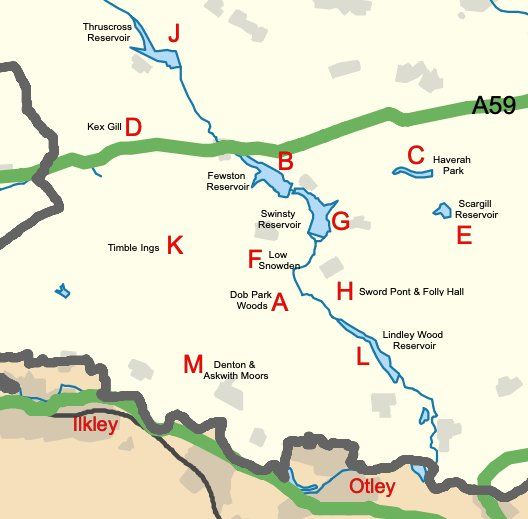
Washburn Valley
A Dob Park Woods
B Fewston Reservoir
C John o’Gaunt’s Reservoir
D Kex Gill Quarry
E Sandwith Moor & Scargill Reservoir
F Low Snowden Crags
G Swinsty Reservoir
H Sword Point & Folly Hall Woods
J Thuscross Reservoir
K Timble Ings
L Lindley Wood & Reservoir
M Denton & Askwith Moor
Creative Commons Attribution-Share Alike 3.0 Unported
with additions by Bradford Ornithological Group (2018).
A Dob Park Woods SE189505
This is the wood on the valley side to the south-west of the river roughly halfway between Lindley Wood and Swinsty Reservoirs.
This is an ancient wood which is good for all the woodland species including Tawny Owl and Great Spotted Woodpecker. In the past Nuthatch and Wood Warbler were relatively common here but sadly they must be considered rarities at the present time. In spring/summer the wood is full of song from both resident and migratory species including Blackcap, Willow Warbler, Mistle and Song Thrush.
B Fewston Reservoir
Another large reservoir surrounded by mixed, but predominantly coniferous woodland. There is a large car park on the bridge between this and Swinsty Reservoir with picnic and toilet facilities. There is a smaller car park at the top end of the reservoir adjacent to the A59 at Blubberhouses. A footpath runs right round the reservoir but it is not suitable for pushchairs in parts.
Another reservoir not noted for its water birds. The top end is best and flocks of Canada and Greylag Geese are often present. In Winter there are usually small numbers of Teal, Coot and Tufted Duck around. Common Scoter, Red Breasted Merganser and Scaup have been noted and a Great Northern Diver took up residence in 1991.
Can be better than Swinsty for waders if the water levels are low and Little Stint, Black Tailed Godwit and Greenshank have been seen along with a very obliging Grey Phalarope in 2002. In Summer Grey Wagtail and Common Sandpiper are regular and Ospreys are sometimes noted on passage.
The surrounding woodlands can hold very large flocks of Crossbills in invasion years and they hold the usual woodland species such as Great Spotted Woodpecker, Woodcock, Sparrowhawk and Tawny Owl.
C John O' Gaunt's Reservoir can be reached from Penny Pot Lane where there is very limited parking. A further track leads to these reservoirs from the Sun Inn on the B6451. The site of John O'Gaunt's castle gives splendid views over the reservoirs.
If there is some exposed mud John O'Gaunt's can be excellent for passage waders such as Greenshank, Green Sandpiper, Ringed Plover, Dunlin and Redshank. Curlew and Lapwing are resident during the spring and summer. The immediate surrounding area is best described as parkland and is excellent for breeding and migrating Redstart.
Spotted Flycatcher are regular here in August/September and on migration large flocks of Hirundines can appear as if out of nowhere. The reservoir itself has breeding Coot, Little Grebe and Great Crested Grebe.
D Kex Gill is on the site of a dis-used silica quarry, with scrapes and ponds. It's position high above the valleys makes it an excellent watch point for migrants. Many interesting waders and ducks have been recorded here and in 1997 Glossy Ibis were seen flying overhead
Summary of 2017 records
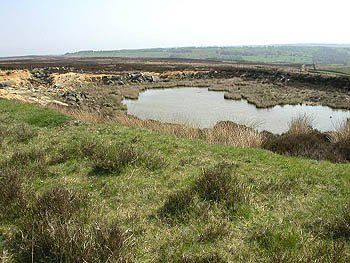

E Sandwith Moor is a stretch of upland west of the road from Leathley to Beckwithshaw (B6161) and east of the road from Farnley to Norwood (B6451). The area is bounded by Haverah Park to the north and Stainburn Forest to the south. Norwood Lane cuts across the moor giving easy access. The highest point is at 247 metres where a parking area allows for good viewing over the rough pasture and moorland. A large swathe of Stainburn Forest has recently been felled and this may provide a habitat for a range of interesting species in the next few years. Wintering Fieldfare and Redwing gather in this plantation during the winter months. The rough pasture land has always been a good place to see large flocks of Golden Plover which gather in late winter and early spring before dispersal. Stonechat are often seen on the roadside walls of Norwood Lane and a variety of birds of prey can often be seen feeding over the moorland.
Sandwith Moor - summary of records 2017
Also Scargill Reservoir
which often contains a wide selection of water fowl and occasional waders. This site has been regularly used by passing Green Sandpipers.
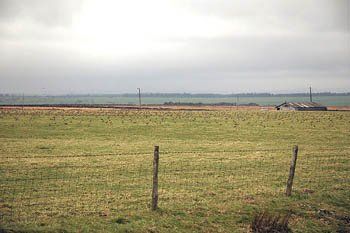
A large flock of wintering Golden Plover on Sandwith Moor.
F Low Snowden Crags
SE175514
This site is on the opposite side of the valley directly west of Sword Point. The crags themselves are relatively minor outcrops surrounded by a sea of bracken with some heather. The main interest is in spring/summer when the Crags are home to several pairs of nesting Whinchat - there may also be Wheatear and other migrant species in spring. The main interest of the Snowden Carr Road (which passes the Crags and heads east and south) is the splendid view to the east and north and the possibility of nesting Tree Pipit and passage migrants such as Stonechat, Merlin, Hen Harrier which have all been seen albeit rarely.
G Swinsty Reservoir
Summary of records 2017
This reservoir is a large area of open water owned by Yorkshire Water, surrounded by mixed woodland. There is a large car park at Stack Point, where the road crosses the reservoir and there is also a large car park at the end of the dam between this and Fewston Reservoirs. There are picnic and toilet facilities at the latter car park. A footpath runs all the way around the reservoir and is suitable for pushchairs. To take in a longer walk one can also incorporate Fewston as well and from the dam end a path leads down the Washburn towards Lindley Wood Reservoir.
This water is not renowned for numbers of wildfowl and often Great Crested Grebe and Cormorant are the only water birds present. Small numbers of Goldeneye, Goosander and Tufted Duck can be noted. A Slavonian Grebe was seen in 1989 and a Red Throated Diver spent a few weeks here in 1996. Common Scoter, Eider, Shag, Pintail and Red Breasted Merganser have all been recorded.
During Winter there is a large gull roost with up to 10,000 birds recorded. Most are Black Headed and Common with only small numbers of the larger gulls. Iceland, Glaucous and Mediterranean Gulls have all frequented this site as well as a Sabine’s Gull before BOG started.
Common Sandpipers are regular visitors and if the water levels are low various waders can be expected. Black Tailed Godwit, LRP and Greenshank have been seen and the 2002 Grey Phalarope spent a brief time here.

Below the dam is a good area for Little Owl, Grey Wagtail, Kestrel, Snipe and winter Stonechat. Further down the valley at Folly Hall Wood a good population of Redstart, Pied Flycatcher and Wood Warbler exists in the summer.
The Woodland surrounding the water has held all three species of woodpecker and often attracts flocks of Crossbill and Brambling. This reservoir is worth watching in spring and autumn for passage Ospreys. At nearby Norwood a male Red backed Shrike graced the garden of the old school house in September 2001.
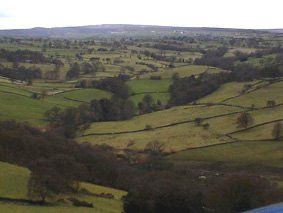
H Folly Hall Wood
SE190515
This is a small wood, mainly oak and birch, some two-thirds of a mile below Swinsty dam adjacent to the river. There is one public footpath running through it.
This is a spring/summer stronghold for Pied Flycatchers and Redstart the former having assisted by nest boxes. Both species may also be commonly heard/seen along either side of the river at this point.
H Sword Point
SE198516
This site is on Jack Hill Lane near to where the road takes a sharp bend to the east of Folly Hall Wood. More than anything else this is a wonderful viewpoint - probably the best in the Washburn Valley, taking in the view to the north and west over to Wharfedale. From here anything flying along the valley can be seen and often with good views given the height at which the observer is standing - definitely a place to linger.
In spring/summer the site is good for Tree Pipit which make good use of the wires running just south-east of the road. Meadow Pipit are also present. Linnet and Goldfinch are common here at this time of year as are Kestrel utilising the wind above the valley side, Curlew and Mistle Thrush are likely to be seen well. Aside from these highlighted species, many others are possible from this viewpoint for the patient observer.
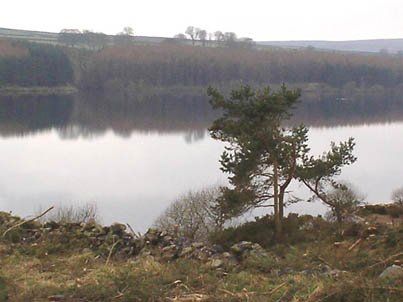
The surrounding open ground holds breeding Lapwing, Snipe, Wheatear, Skylark and Curlew, whilst Stonechats and Kestrels can be seen at any time.
J Thruscross Reservoir is the remotest of the Washburn Reservoirs and is fringed by coniferous woodland and then overlooked by open moorland and rough pasture. Parking is available in the large car park by the dam. A footpath runs all round the reservoir but it is not suitable for pushchairs and is heavier going than the other Washburn reservoirs.
Summary of 2017 Records
Water levels effect wader numbers but Grey Plover, Ruff, Black Tailed Godwit and Greenshank have all been recorded and this site seems favourable for good numbers of passage Oystercatchers. Small numbers of Goosanders can be seen as well as large flocks of Canada and Greylag Geese. Scarcer birds have included Whooper Swan, Kittiwake, Glaucous Gull, Rock Pipit, Shag, Hobby and Osprey. Cormorants are often present.
Redstarts, Spotted Flycatchers, Redpolls and Grey Wagtails breed around the woodland edge and Hanging Wood below the dam can yield Pied Flycatcher and Wood Warbler.
K Timble Ings is a large area of upland woodland, owned by Yorkshire Water on the Western side of the Washburn Valley. Parking is available opposite Anchor Farm at SE170542 or along the dirt track at SE165530. There are various rights of way through the woodland and on the adjacent moorland.
The Woodland consists mainly of Pine, Larch and Spruce with smaller areas of Broadleaf trees. The woodland borders onto extensive heather moorland containing various streams and bogs.
This area has been relatively well watched over the years and has turned up some quality birds. One of the most notable of these was a Great Grey Shrike in 1993. Rough Legged Buzzards were recorded the following year, with one individual being very confiding around Ellar Carr Pike. Flocks of finches are often in evidence with Siskin, Redpoll and Brambling often appearing in large numbers, whilst Crossbills can be abundant, especially in late summer.
During the breeding season the woods are alive with the songs of Tree Pipit, Blackcap, Redstart, Chiffchaff and Willow Warbler. An evening stroll at this time will yield Woodcock, Tawny Owl and Cuckoo. Wood Warbler has been noted in the past.
Various locally scarce birds have been seen such as Turtle Dove, Grasshopper Warbler, Snow Bunting, Black Redstart and Hawfinch. Two of the latter species frequented Anchor Farm in the Winter of 2004/05. Every year that a Waxwing invasion occurs, flocks of these handsome birds come into roost in the Winter evenings. Thousands of Redwings and Fieldfares can also be present.
Raptors can be noted overhead with Peregrine, Hobby and Buzzard all being seen. Ospreys sometimes linger in the area on migration and Marsh Harrier and Raven have been reported in recent years. Sparrowhawks and Kestrels can readily be seen throughout the year.
The South Western corner of the wood is a good place to observe visible migration in Autumn. Thousands of Winter Thrushes can pass through among many other birds. Rock Pipit and Whooper Swan have been recorded as flyovers. The surrounding moorland holds breeding Whinchat, Curlew, Snipe, Lapwing, Skylark and Greylag Geese and Stonechat can be seen at any time of the year. Nearby Round Hill can sometimes be good for passage Dotterel in early May.
L Lindley Wood and Reservoir Lindley Wood is a large reservoir at the lower end of the Washburn Valley. The Western side backs onto fields, copses and scrub, mainly Hawthorn. The Eastern shore is banked by Willow scrub and over shadowed by woodland, which is predominantly Larch. The area around the Trout farm consists of the river Washburn, mixed woodland and scrub with nearby Lindley Green being mixed farmland.
Limited parking is available at either side of the bridge where the road crosses the top end of the reservoir and also at the Trout Farm below the bottom end of the reservoir. A footpath runs along the eastern shore between the two car parking areas and special viewing areas are in the process of being created. From the Trout Farm the path goes in the opposite direction and comes out at Leathley.
Lindley was brought into the spotlight in April 1989 when a Dartford Warbler stayed for a few days. Ospreys often call in on migration, the first of these being recorded in 1990. Red Kites are now seen regularly thanks to the reintroduction scheme.
Rarer species seen on the reservoir include Black Necked Grebe, Shag, Iceland Gull and Little Gull. Duck numbers can vary, but in Winter Goldeneye, Tufted Duck, Pochard and Goosander are usually present. The latter species used to roost here in large numbers, often exceeding 100 birds but fewer do so now. Scarcer wildfowl recorded include Garganey, Scaup, Pintail, Red Breasted Merganser, Gadwall, Common Scoter and Brent Goose. Wigeon can often be present in good numbers in autumn and winter. Cormorants are resident and up to 80 have been noted roosting in the trees on the Western shore.
The water level often dictates wader passage at this site but when mud is showing the reservoir can be productive in the passage periods. Common and Green Sandpipers, Green and Redshank, Dunlin and Little Ringed Plover are regular. I n 1996 up to 21 Little Stint, eight Spotted Redshanks, Sanderling and Ruff were present. Ringed Plover and Whimbrel can be recorded as well as large numbers of Lapwings. photo: Craven Herald
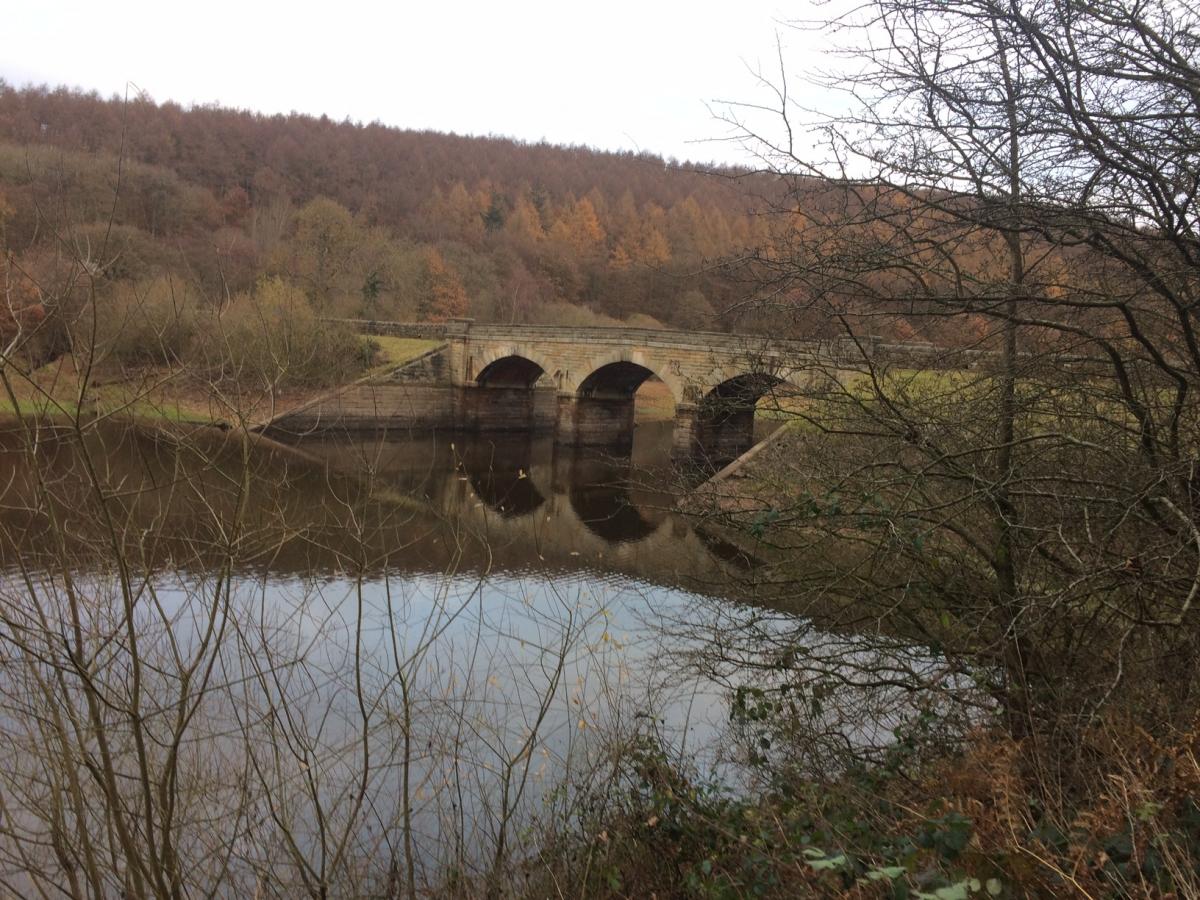
The bottom half of the reservoir is often covered with Swifts and Hirundines hawking for insects. The woodlands hold all the commoner species including regular Redpoll, Siskin, Bullfinch, Green and Great Spotted Woodpecker as well as various species of warbler. Brambling can be seen in good numbers in winter whilst Redstart and Pied Flycatcher are often in evidence at the top end of the Reservoir in summer. Crossbills can be attracted to this area at any time of the year. The reservoir overflow is particularly good for Pied and Grey Wagtails.
Summary of 2017 Records
The Trout Farm area is excellent for Garden Warbler and Grey Heron whilst this is possibly the best site in the BOG area to find Lesser Spotted Woodpecker and Marsh and Willow Tit. Lindley Green was once a stronghold for Yellowhammer as well as holding a healthy Little Owl population. As with all the Washburn woodlands this whole area is very good for Roe Deer.
M Denton & Askwith Moor
Denton and Askwith Moors are fine examples of heather moorland, to the south and west of Timble Ings, which merge with the Grouse moors to the north and south. A walk on these moors may yield worthwhile sightings. Kestrels are common whilst Buzzard and Raven may be seen if the observer is lucky. During migration Wheatear may turn up anywhere as may Hen Harrier. Dotterel have occasionally occurred on Round Hill to the west on their spring passage. Meadow Pipits are very common of course, as are Red Grouse. Short-eared Owl is also possible. In spring, Curlews will be everywhere whilst nesting Greylag and Canada Geese are likely to be seen. Lapwing will be prominent in the fields bordering the moorland and the occasional Sky Lark is likely to be heard. Snipe may occur anywhere flying away from the observer if disturbed. Winter is not usually a productive time but the lingering Rough-legged Buzzard in the winter of 1994/95 is indicative of the possibilities.
Summary of 2017 Records
Denton Park SE 145488
Denton Park is a landscaped area associated with the 1770s country house. It's features include a walled garden, parkland and lake with panoramic views over moorland to the south of Ilkley. In winter, Curlews gather in huge numbers in the fields to the south of the estate and Lapwing flocks gather before their dispersal to moorland breeding sites. In 2013, a Yellow-browed Warbler was seen and heard at Denton Hall on 6th October.

